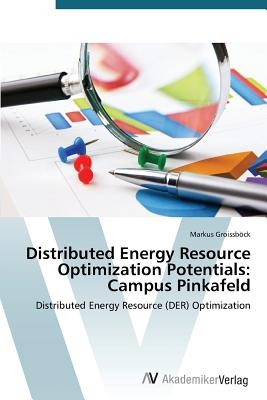
- We will send in 10–14 business days.
- Author: Markus Groissböck
- Publisher: AV Akademikerverlag
- Year: 2014
- Pages: 120
- ISBN-10: 3639723465
- ISBN-13: 9783639723465
- Format: 15.2 x 22.9 x 0.7 cm, minkšti viršeliai
- Language: English
- SAVE -10% with code: EXTRA
Distributed Energy Resource Optimization Potentials (e-book) (used book) | bookbook.eu
Reviews
Description
This work sets out to describe the necessary physical model for creating the building model LoadCalc that can be used to generate load curves for cooling, heating and electricity demand on an hourly basis if no detailed information are available. Existing software solutions are either too complex or calculate only monthly and yearly energy demands. On the basis of DIN-18599 (draft) and VDI-6020, it is possible to create a simplified building model that is sufficiently accurate to meet the requirements of DER-CAM and the EU-project EnRiMa. With reference to the aforementioned standards, some improvements in accuracy have been made in certain areas. For example, the solar air temperature and a heat transfer coefficient dependent on wind speed were added. The comfort of users in the building is taken into consideration by the operative room temperature. The load curves generated by the building model LoadCalc are used in DER-CAM to optimize the energy demand. DER-CAM's objective is to minimize costs and/or carbon emissions of buildings and focuses especially on distributed energy resources technologies such as solar photovoltaic, storage technologies and CHP. The described building model LoadCalc, in combination with DER-CAM, has been applied to the Campus Pinkafeld.
EXTRA 10 % discount with code: EXTRA
The promotion ends in 21d.20:05:39
The discount code is valid when purchasing from 10 €. Discounts do not stack.
- Author: Markus Groissböck
- Publisher: AV Akademikerverlag
- Year: 2014
- Pages: 120
- ISBN-10: 3639723465
- ISBN-13: 9783639723465
- Format: 15.2 x 22.9 x 0.7 cm, minkšti viršeliai
- Language: English English
This work sets out to describe the necessary physical model for creating the building model LoadCalc that can be used to generate load curves for cooling, heating and electricity demand on an hourly basis if no detailed information are available. Existing software solutions are either too complex or calculate only monthly and yearly energy demands. On the basis of DIN-18599 (draft) and VDI-6020, it is possible to create a simplified building model that is sufficiently accurate to meet the requirements of DER-CAM and the EU-project EnRiMa. With reference to the aforementioned standards, some improvements in accuracy have been made in certain areas. For example, the solar air temperature and a heat transfer coefficient dependent on wind speed were added. The comfort of users in the building is taken into consideration by the operative room temperature. The load curves generated by the building model LoadCalc are used in DER-CAM to optimize the energy demand. DER-CAM's objective is to minimize costs and/or carbon emissions of buildings and focuses especially on distributed energy resources technologies such as solar photovoltaic, storage technologies and CHP. The described building model LoadCalc, in combination with DER-CAM, has been applied to the Campus Pinkafeld.


Reviews